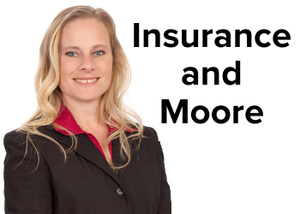Julie Moore, ACIP CRM
Manager, AB Commercial Auto Underwriting
SGI CANADA Insurance Services Ltd, Alberta
Rising lumber costs may leave your buildings under-insured
Your home or your business has been damaged – maybe by a fire, flood, or some other disaster. You report the loss to your insurer, and an adjuster comes out to do an evaluation. Then you get the call no one wants – you find out the cost to rebuild or repair the damage is more than you’re insured for, and you’re going to have to pay the difference.
The risks of being under-insured
People are often under-insured for the correct value of their home, business, and/or farm buildings, particularly when they choose a specific limit of insurance on their policy. Too often, the problem only becomes clear when they go to file a claim.
For example, if your home, business, or farm building burns down, you may not have enough coverage on your policy to rebuild it. Even though that building is listed on your policy, the correct value of the building may not be – and your limit of insurance may not be high enough to pay to rebuild it, based on today’s costs. Your insurance adjuster will also need to account for the cost of clean-up and debris removal, as well as re-landscaping your property.
When thinking about insurance, you need to consider two things: how much it would cost to fix or rebuild your building, and how does that compare to the insured value and policy limits you choose?
Keep in mind that real estate or market value – how much you could sell your home or business for in the current market – isn’t the same as insured value. Insured value is how much it would cost to rebuild it. Your insurance broker can help you determine that value.
The cost of lumber has skyrocketed
Since the COVID-19 pandemic began, the price of building materials – particularly lumber – has been steadily climbing. At the same time, it’s been getting harder to source those materials. Early on, lumber mills across North America laid off staff and operated at a slower pace. Canadian mills have since hired back some staff, but it’s taken time to ramp up production, while many U.S. mills have yet to resume production. In the States, mortgage rates are low and the demand for new homes is high, so a lot of Canadian lumber is heading south, but the demand for lumber is also high here.
Softwood lumber prices rose by 118.9 percent in Canada between March 31, 2020, and March 31, 2021. That’s the largest year-over-increase for softwood lumber ever reported by Statistics Canada. In March 2021 alone, Canadian softwood lumber prices rose by nearly 12 per cent, and prices for veneer and plywood products rose by more than 20 per cent, Statistics Canada said.
In May 2020, 1,000 board feet of 2×4 lumber (Eastern spruce, pine, and fir) was selling for just over $500. On April 30, 2021 , the same wood was valued at $1,745, according to Natural Resources Canada. This has increased costs for framing, cabinets, doors, windows, and flooring.
With lumber becoming harder to get, composite wood – such as plywood, medium density fibreboard (MDF), and oriented strand board (OSB) – is now being sold at far higher prices than it was a year ago. You may have seen a recent meme on social media, showing a car with its windshield smashed by a sheet of plywood. The caption reads, “I was going to go through insurance, but I sold the plywood instead and got a brand-new car.”
More than 90 per cent of Canadian homes are wood-frame buildings, so any damage to your home right now could be very expensive to repair or replace. And this isn’t just a city problem – small-town lumber shops and builders are also facing supply issues and higher material costs.
Policy limits and “insuring to value”
What does this mean for you? That depends on the choices you make when you insure your home and any other buildings you own, with advice and guidance from your insurance broker. The options include:
1. Guaranteed Replacement Cost (GRC). If you choose this option, you are covered for whatever it takes to rebuild your insured buildings.
2. Co-insurance. If GRC isn’t an option for your property, we recommend insuring to 100 per cent of the replacement or actual cash value – this gives you a cushion when there’s a cost increase beyond normal inflation, and protects you from having to pay a co-insurance penalty.
Talk to your broker
If you’re not sure about your policy limits, or you’d like to re-evaluate the coverage you have, give your broker a call. Your home and other buildings are likely the most expensive things you own. Make sure you know what they’re worth and protect them (and your financial future) accordingly.


